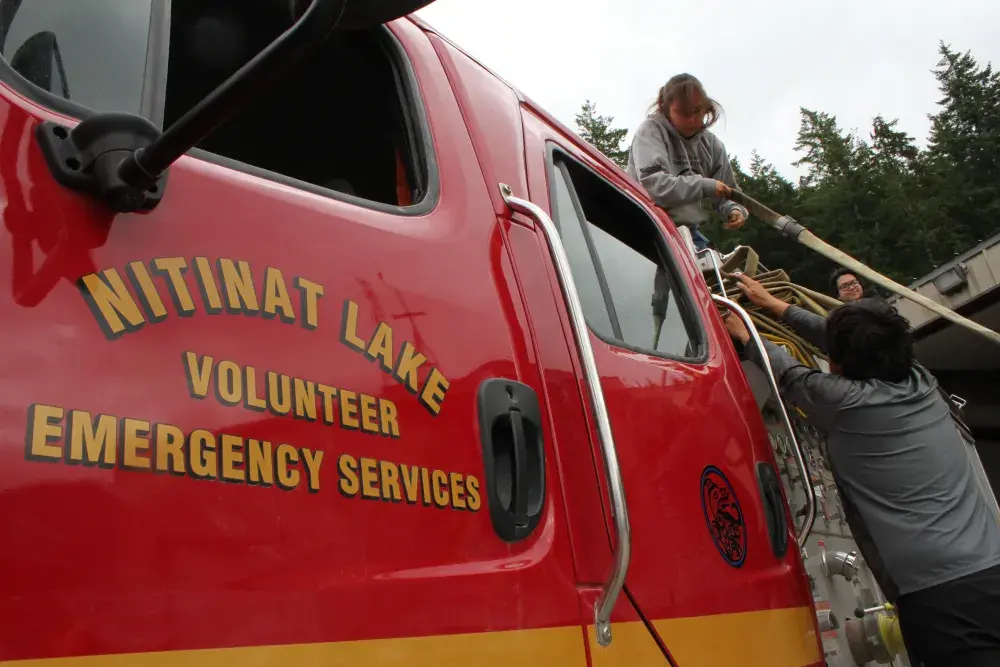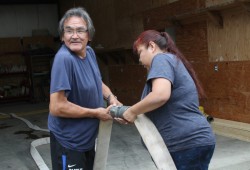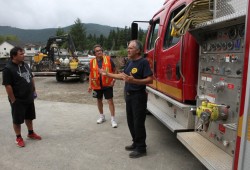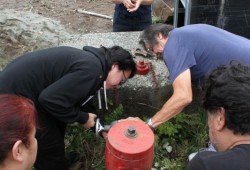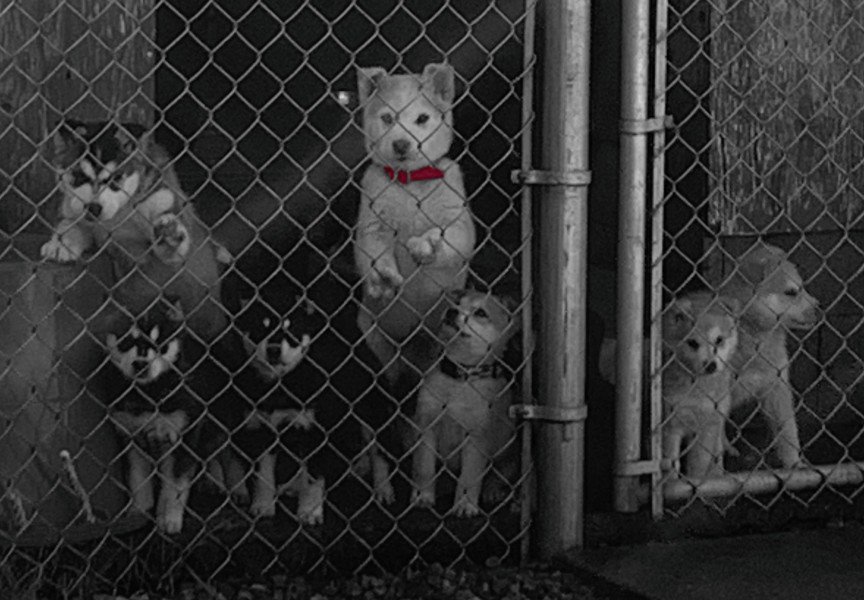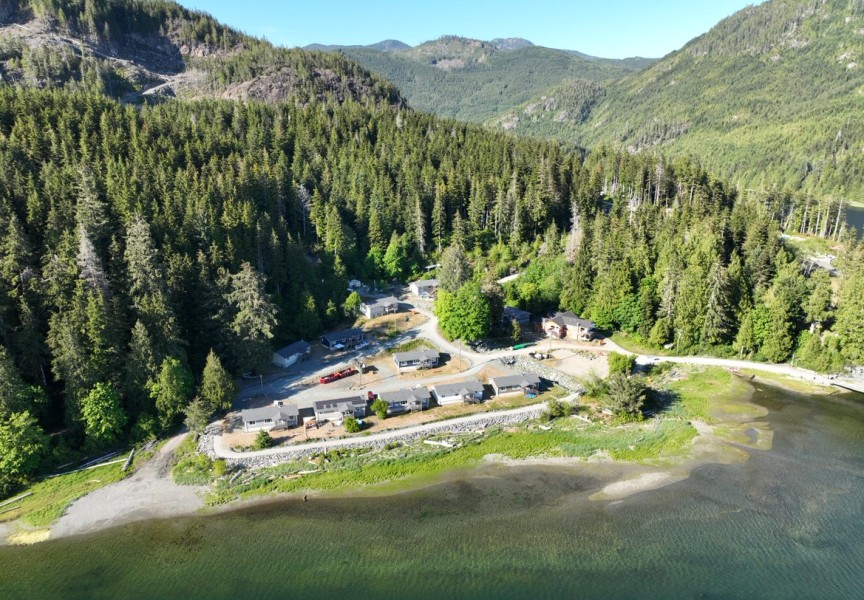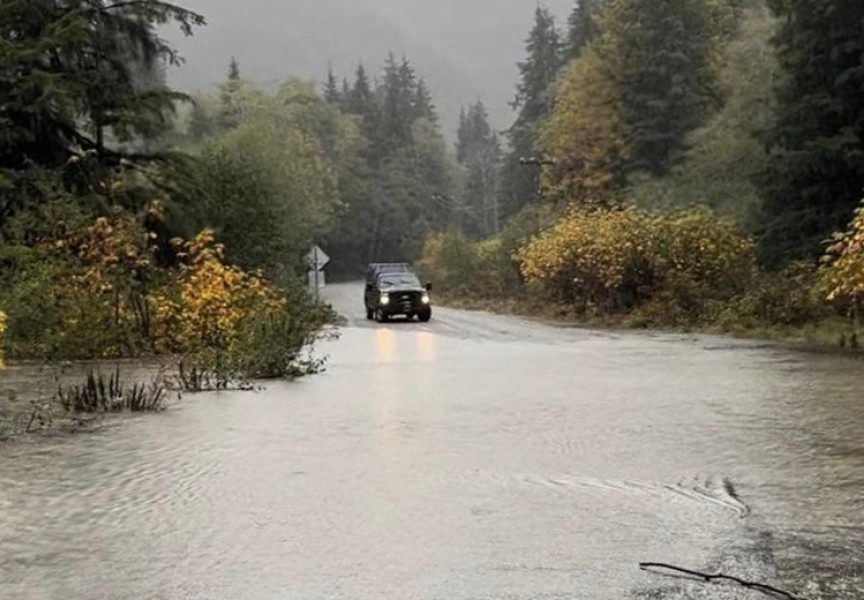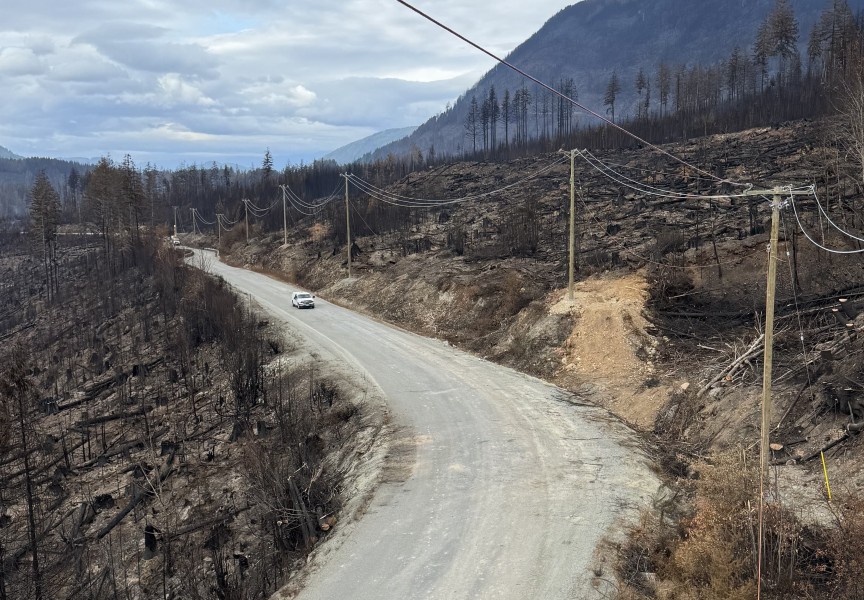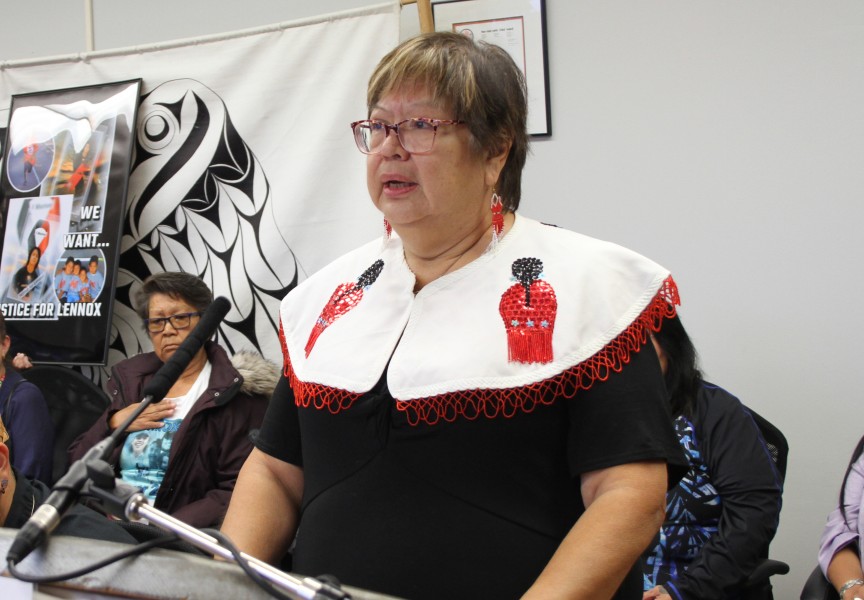The need for an adequate fire response will always be burned in the memory of Cecil Joseph. He pulled his niece and her family from a blaze about seven years ago, as their house burned in the Ditidaht First Nation’s village by Nitinaht Lake.
“I had to run in,” said Joseph, who had no training in responding to a house fire at the time. “I helped my niece and her children out. Her spouse was in there, but he was sleeping, he didn’t know it was on fire. I woke him up.”
Joseph frantically searched for another occupant in the house as the flames grew.
“I ran around the house,” he said. “I started to run towards the entranceway and flames were coming in the door. So our only escape was a window. I got them out okay.”
At the time the community had its fire engine, a 2004 model equipped to carry 900 gallons that was purchased new two decades ago, but the closest hydrant to the burning house didn’t work.
“It was a cedar home, and there was nothing we could do about it,” recalled Joseph. “We had to run the hose 200, 300 feet down the road.”
“Nobody had training,” he added. “We could have saved most of the structure if that fire hydrant had been working.”
Joseph and a handful of other Nitinaht residents plan to change how the community will respond to fires in the future with the formation of a 12-member group of volunteer firefighters. They received training over the last week of August in how to fight a structure fire from a distance, using the village’s fire engine, hydrants and hoses.
“It’s a good experience now. Everybody is learning fast, everybody pays attention,” Joseph observed. “It’s something our community needed because that fire truck’s been sitting for a long time. It’s not really been used.”
Training was provided by First Nations Emergency Services, a federally funded organization that works to help Indigenous communities prepare for house fires and other incidents.
“That’s our goal, is to come in and stand beside the members of the community, and then kind of step away so they can build more capacity,” said Reo Jerome, a career firefighter with FNES who was providing training. “Any fire department can have a fire hall and a fire engine and equipment, but people need to be trained and respond.”
With no breathing apparatuses on hand, the volunteers were trained to strictly attack fires from a distance, focusing on preventing the blaze from spreading. Due to the presence of synthetic materials in modern house construction and furnishings, anyone near the flames can quickly succumb to the effects of toxic fumes, explained James Fothergill, emergency coordinator for the Ditidaht First Nation. Without a proper oxygen tank, a responder can quickly become another victim of the incident.
“No one should be entering any structure that’s on fire,” he said, adding that the expected escape time is three minutes from a house fire. “Three minutes down from about 20 in years past when natural fibres were used primarily in furnishings.”
“That’s if your couch is on fire and it’s emitting toxic smoke throughout the building, if you take one or two breaths of that toxic smoke, you’re done,” Fothergill added. “If we arrive at a scene and the building is clearly overcome with fire, with smoke, we can’t do anything about that particular structure. The idea would be to do the best that we can to make sure that it doesn’t spread.”
With no cellular service in Nitinaht, the group was working to determine the best way to alert volunteer firefighters of an emergency. A possible method could be repurposing the community’s tsunami warning system, said Fothergill.
Hel noted that house fires are the No. 1 emergency priority for the village – even more than forest fires, despite this summer’s extreme drought.
“The biggest risk that we’ve determined is kitchen fires,” he said. “With the forest floor, the vegetation that’s there, the trees are mostly hemlocks and they’re huge and there’s no ladder fuels. The actual risk from the campsites is pretty much nil.”
Fothergill said that the community has been working to remove hazards that could cause fires from spreading from one house to another.
“Some areas are pretty well cleared, but some areas are not,” he said. “The hazard is that a house fire could very easily jump to another house, to another house, then eventually consume the whole community.”
Self-sufficiency in the village is critical, as the average response time from the nearest fire department in Lake Cowichan is two hours. In recent years locals have used garden hoses to deal with house fires.
“I’ve responded to a fire with a garden hose,” said Jerry Peter, a lifelong Nitinaht resident who also underwent the training in August. “We caught it in time, but the consequences were there if it went on and on.”
Nitinaht can only be accessed by logging roads, and when residents have called 911, the operator often didn’t know where the community was, said Peter.
“I’ve phoned 911 before and I was on there for 40 minutes, they had no clue where we were,” he said. “There’s no zip code here, so they don’t have a zip code to go by and it doesn’t pop up on the map.”
“We just hang up and phone again,” added Peter.
The community has had fire departments in the past, but through his interviews with former volunteers Fothergill found that frequent medical calls created trauma. The First Nation also plans to assemble a local team who can specialize in medical calls.
“There were some fairly robust firefighting teams over the last 20, 30 years in the community, but things really fell off about six, seven years ago because firefighters were getting caught up a little too much in medical calls,” he said. “The issue being most folks here are related, so when you’re answering a medical call for your niece, nephew, father, mother, grandmother it can be just devastating to the person responding.”
Now that the volunteers have received some basic training, regular practices and recruitment will be needed to ensure that a crew is ready for an emergency. During his work with First Nations Jerome has found it to be particularly demanding for someone in a small community “to respond to an emergency knowing that they’re responding to a family member or a friend almost every time.”
“It is extremely amazing that we have people stepping up to do that,” he said. “In remote communities, everyone knows everyone.”

